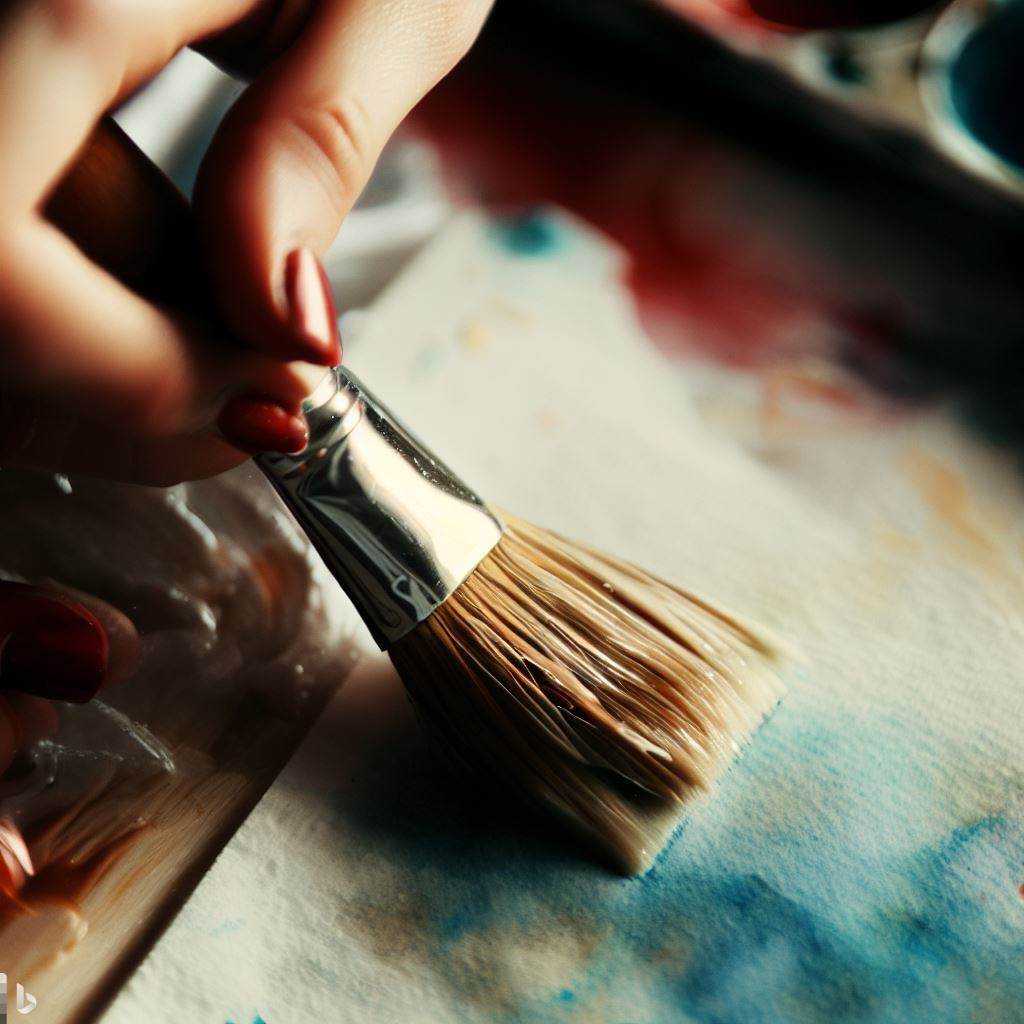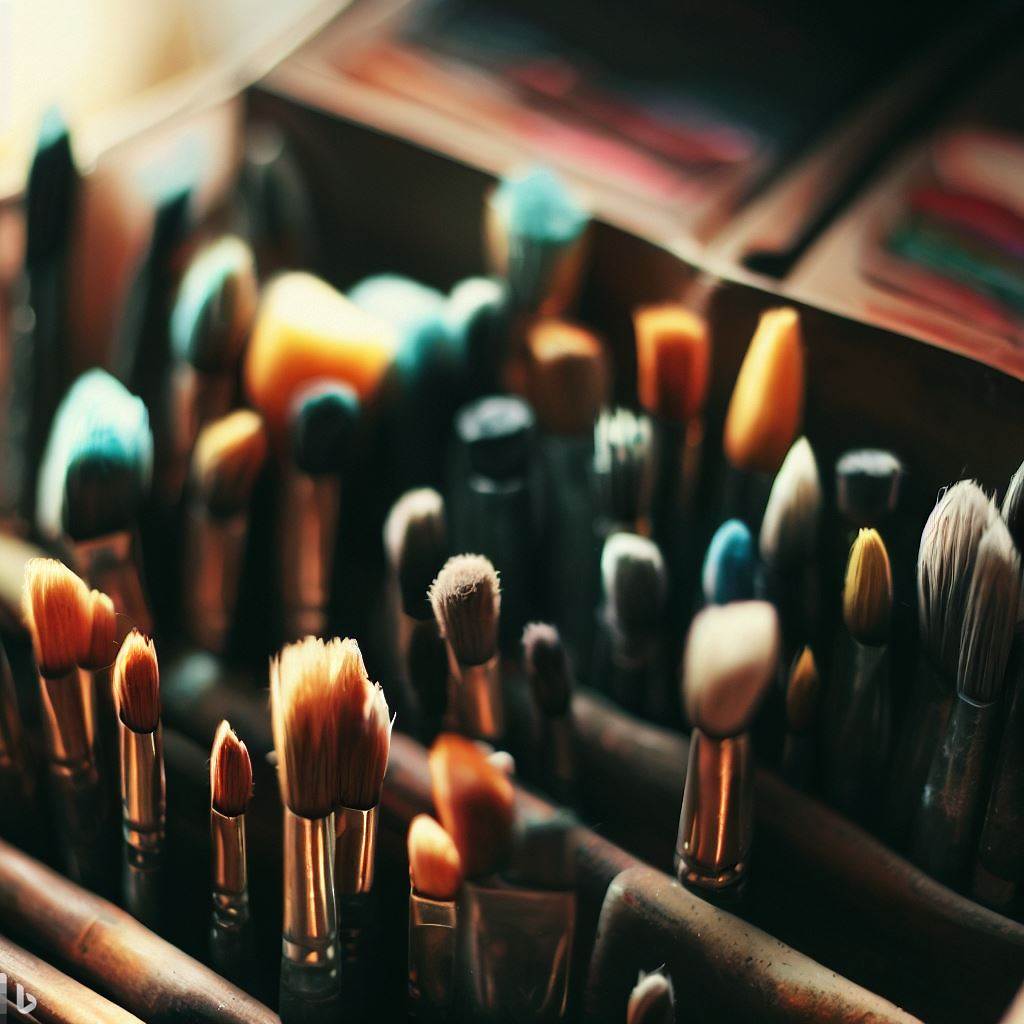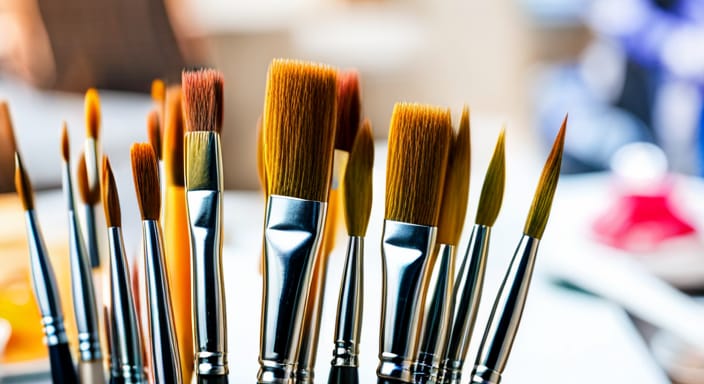
Watercolor painting is a beautiful and delicate art form that requires the right tools and techniques. One of the most important tools for watercolor painting is the brush. Watercolor brushes come in different shapes, sizes, and materials, and they require proper care to maintain their quality and longevity. In this article, we will discuss how to care for watercolor brushes to ensure they last for years to come.
1. Clean your brushes well
Throughout the process of watercolor painting, a watercolor brush is cleaned constantly… but maybe not cleaned well. Proper cleaning is essential to keep your brushes in good condition. After each painting session, rinse your brushes thoroughly with clean water to remove any remaining paint. You can also use a brush cleaner to remove any stubborn paint residue. Be sure to clean the brush all the way to the ferrule, where the bristles meet the handle, to prevent paint from drying and hardening in the brush.
2. Use the right cleaning solution
When cleaning your brushes, it is important to use the right cleaning solution. Some people don’t recommend cleaning natural hair brushes with soap very frequently, as it can damage the bristles. Instead, use a mild brush cleaner or a mixture of warm water and vinegar to clean your brushes. Synthetic brushes can be cleaned with soap and water, but be sure to rinse them thoroughly to remove all soap residue.
3. Dry your brushes properly
After cleaning your brushes, it is important to dry them properly to prevent damage to the bristles. Gently squeeze out any excess water from the brush and reshape the bristles with your fingers. Lay the brush flat on a clean towel or hang it upside down to dry. Avoid standing the brush upright in a cup or jar, as this can cause water to seep into the ferrule and damage the brush.
4. Store your brushes properly
Proper storage is essential to keep your brushes in good condition. Store your brushes in a clean, dry place where they won’t be crushed or bent. You can store them in a brush roll or a brush holder to keep them organized and protected. Avoid storing your brushes in a closed container, as this can cause moisture to build up and damage the bristles.
5. Use the right brush for the job
Using the right brush for the job can help prevent damage to your brushes. Different brushes are designed for different techniques and effects, so it is important to choose the right brush for the task at hand. For example, a round brush is great for detail work and fine lines, while a flat brush is ideal for washes and broad strokes.
6. Don’t let paint dry in your brushes
Allowing paint to dry in your brushes can cause the bristles to become stiff and damaged. To prevent this, clean your brushes thoroughly after each painting session and avoid leaving them in water for extended periods of time. If you need to take a break from painting, wrap your brushes in a damp paper towel or store them in a brush holder to keep them moist.
7. Replace your brushes when necessary
Even with proper care, watercolor brushes will eventually wear out and need to be replaced. Signs that it’s time to replace your brush include frayed bristles, a misshapen tip, or a loose ferrule. It’s important to invest in high-quality brushes and replace them when necessary to ensure the best results in your painting.
Care for Watercolor Brushes – cleaning?
Watercolor brushes require proper care to maintain their quality and longevity. One of the most important aspects of their care is cleaning. Here are some signs that your watercolor brushes need cleaning:
- The bristles are stiff or frayed. This can be a sign that paint has dried in the brush and is causing the bristles to stick together or become damaged.
- The brush is not holding its shape. This can be a sign that paint has dried in the brush and is causing the bristles to lose their shape.
- The brush is not picking up paint as well as it used to. This can be a sign that paint has built up in the brush and is preventing it from holding paint properly.
- The brush is leaving streaks or marks on your painting. This can be a sign that there is paint or residue in the brush that is affecting the quality of your painting.
- The brush has a strong odor. This can be a sign that there is bacteria or mold growing in the brush due to improper cleaning.
How often should you Clean your Watercolor Brushes?
Watercolor brushes require proper care to maintain their quality and longevity. Cleaning your brushes is an essential part of their care, but how often should you clean them? Here are some tips from the search results:
- Some artists recommend cleaning your brushes between every color[1]. This ensures that the brush is free of any remaining paint and ready for the next color.
- Others recommend cleaning your brushes after each painting session[2][3]. This ensures that the brush is thoroughly cleaned and ready for the next use.
- Watercolor is a pretty mild and easy-to-clean medium, so you don’t need to clean your brushes as frequently as you would with other mediums[4]. However, it’s still important to clean them regularly to prevent paint from drying and hardening in the brush.
Citations:
[1] https://ebbandflowcc.com/care-watercolor-brushes/
[2] https://jennarainey.com/how-to-clean-watercolor-brushes/
[3] https://www.scratchmadejournal.com/blog/watercolor-brushes-10-tips-for-proper-care
[4] https://youtube.com/watch?v=L8E78oTcCo8
How should you store your Watercolor Brushes after Cleaning?

After cleaning your watercolor brushes, it’s important to store them properly to maintain their quality and longevity.
- Dry the brush properly: After cleaning your brush, gently squeeze out any excess water and reshape the bristles with your fingers. Lay the brush flat on a clean towel or hang it with the bristles facing down to dry.
- Store your brushes in an upright position: Store your brushes in a brush holder or a brush roll to keep them organized and protected. Keep them in an upright position to prevent moisture from seeping into the ferrule and damaging the brush.
- Don’t crowd your brushes: Give your brushes breathing room so they don’t grow mold and get bent out of shape. Avoid storing them in a closed container, as this can cause moisture to build up and damage the bristles.
In conclusion, caring for watercolor brushes is essential to maintain their quality and longevity. By following these tips, you can keep your brushes in good condition and enjoy beautiful watercolor paintings for years to come.


